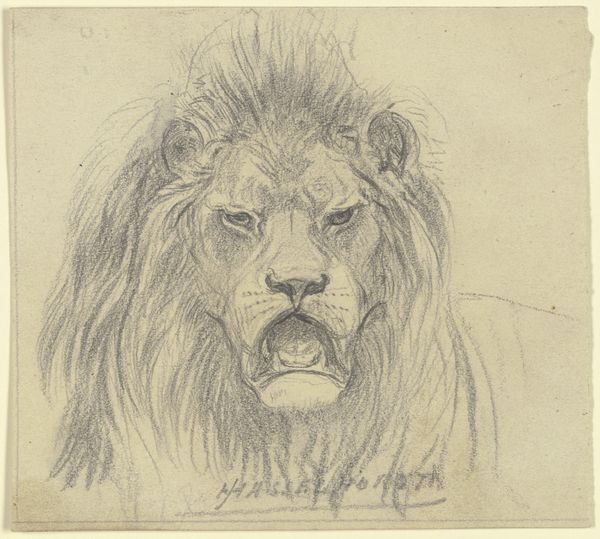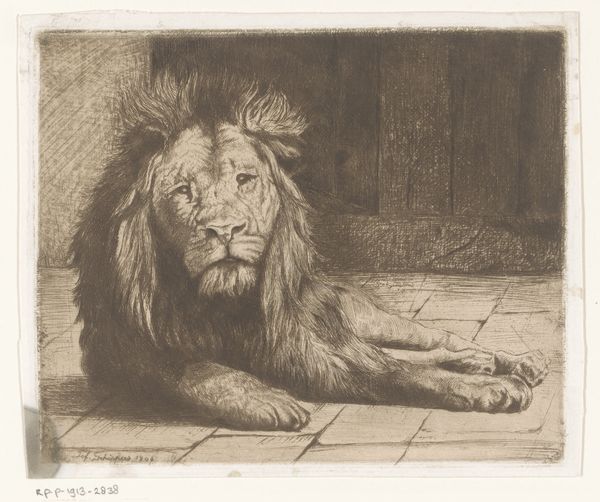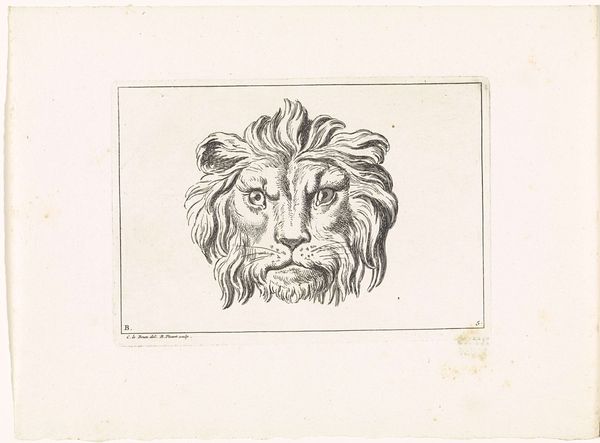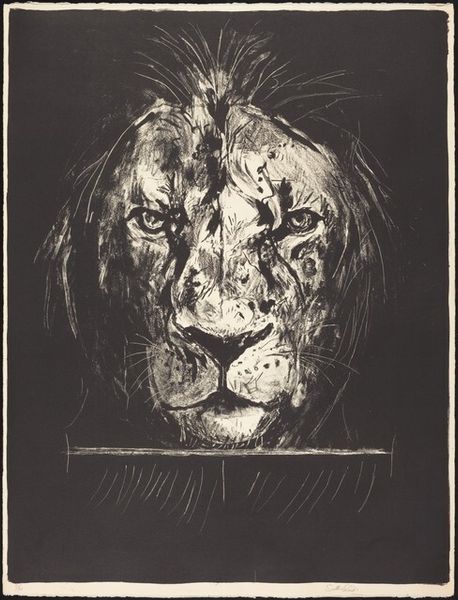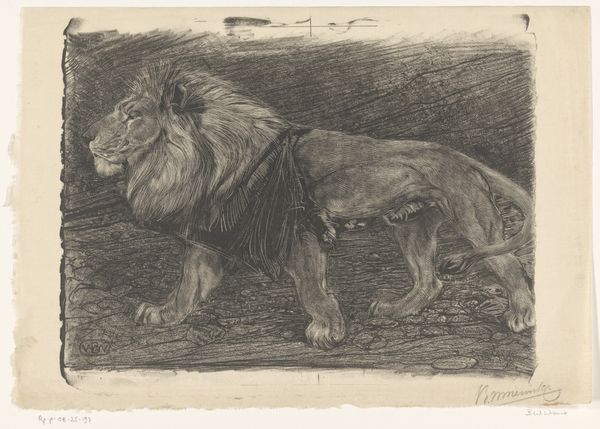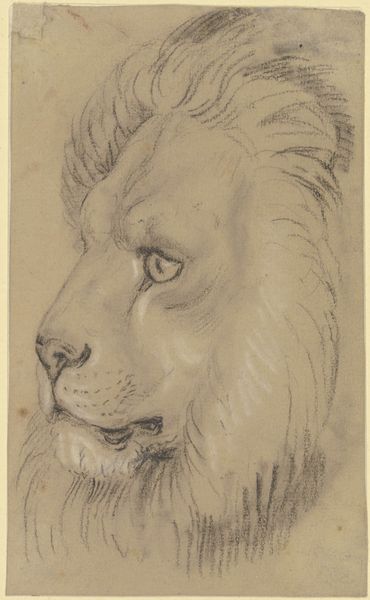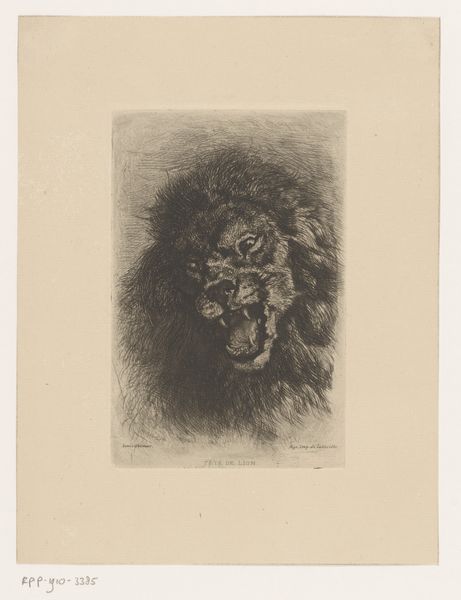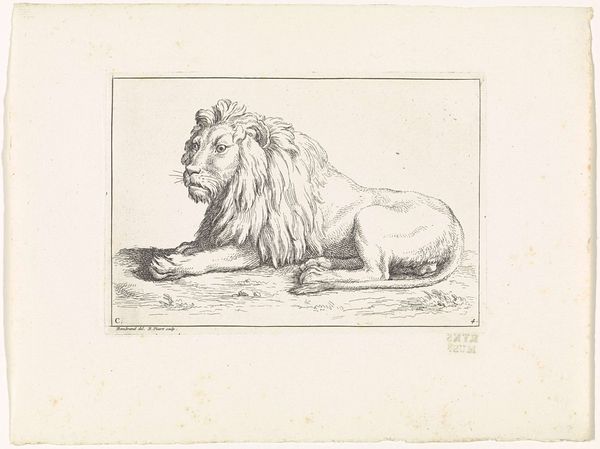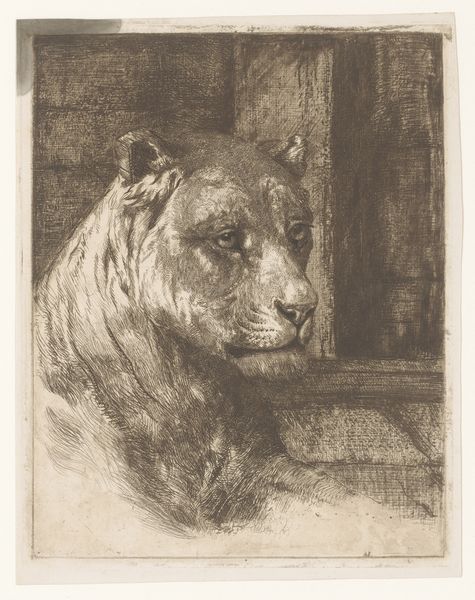
drawing, pencil, charcoal
#
portrait
#
pencil drawn
#
drawing
#
animal
#
charcoal drawing
#
pencil drawing
#
pencil
#
charcoal
#
realism
Dimensions: height 230 mm, width 174 mm
Copyright: Rijks Museum: Open Domain
Editor: We are looking at "Head of a Lion," a drawing using pencil and charcoal created sometime between 1864 and 1936 and held at the Rijksmuseum. It is quite stunning. I am impressed with the detail the artist captured. How might we interpret the impact of those compositional choices? Curator: Observe the use of chiaroscuro, the interplay of light and shadow, carefully modeled to define form. The artist masterfully modulates tone using subtle gradations in pencil and charcoal. The precision in replicating textures adds to its formal power, does it not? Editor: It does. Is it typical of the period? Curator: The drawing presents a clear and focused composition, prioritizing the precise description of form and surface. Consider the formal relationships between the textured mane, the smooth facial plane, and the shadowed background. Ask yourself how these formal elements convey a sense of realism, and perhaps, an almost tactile experience for the viewer. Editor: I see what you mean. The emphasis on texture really brings the animal to life. Is there a theoretical grounding we can explore to enhance this perspective? Curator: Formalism encourages engagement with theoretical perspectives, notably from semiotics, examining underlying structures and systems of meaning creation. For example, observe how the careful rendering of each strand of the lion's mane contributes to an overall impression of regal power. What is the impact of that signifier within the formal space of the composition? Editor: That’s an interesting perspective. I'm starting to understand how the emphasis on formal elements reveals new dimensions within the artwork. Thank you! Curator: It's through close visual inspection and attention to form that we unlock deeper understanding and new ways of encountering an artwork such as this powerful lion portrait.
Comments
No comments
Be the first to comment and join the conversation on the ultimate creative platform.


